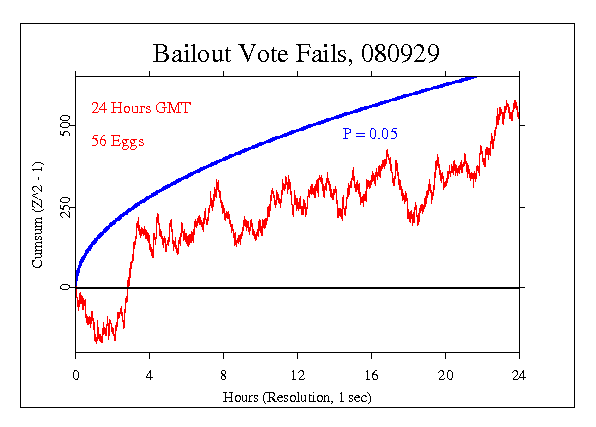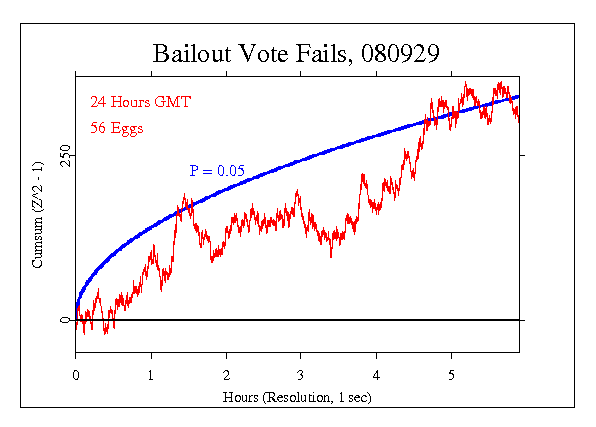|
From The National Post,
Posted: September 29, 2008, 2:14 PM by Shane Dingman
Political wrangling faulted as U.S. House bailout vote fails
The House of Representatives Monday rejected by a vote of
228-205 a Wall Street bailout bill that would have
authorized the Treasury Department to spend up to
US$700-billion to purchase broken mortgage-backed bonds from
banks with the goal of jump-starting stalled capital
markets, Reuters reports.
Defeated by skeptics from both parties who questioned the
need for it and whether it would work, the bailout plan was
proposed by the Bush administration on Sept. 20. Congress
modified it in just days amid warnings from the White House
that urgent action was needed to prevent economic disaster
(watch the markets here).
As House Speaker Democrat Nancy Pelosi said: "While the bill
has failed, the crisis has not disappeared."
Represenative Barney Frank told reporters after the vote
that the Democratic leadership would assess the "economic
reaction."of the vote before bringing the package back for a
second try.
But, The Washington Post is reporting that the GOP is
heading for the exits, and will refuse to vote again on the
rescue package:
Rep. John Boehner (R-Ohio) just told The Post's Paul
Kane there will be no more votes today on the $700 billion
Wall Street bailout rejected earlier this afternoon by the
House.
The members have left the House and headed to the
airports for a scheduled recess. Boehner said he had no idea
when there could be a new vote.
The GCP event was set for the 24-hour GMT day, and includes
several hours before the voting and several hours after,
during which the news spread and among other things resulted
in a record drop in the US stock market. The Chisquare is
86944.5 on 86400 df, for p-value of 0.095 and Z = 1.309.
An exploratory analysis gives
a more comprehensive picture of the financial meltdown.

The voting began about 1:30 pm (17:30 GMT) and the actual timing of the
vote failure was 2:08 pm. The following graph shows the data
from 2:08 pm until midnight GMT, almost 6 hours. It is
interesting to look at the graph of Wall
Street performance
around that time.

It is important to keep in mind that we have only a tiny
statistical
effect, so that it is always hard to distinguish signal from
noise. This means that every "success" might be largely
driven by chance, and every "null" might include a real
signal overwhelmed by noise. In the long run, a real effect
can
be identified only by patiently accumulating replications of
similar analyses.
| 
